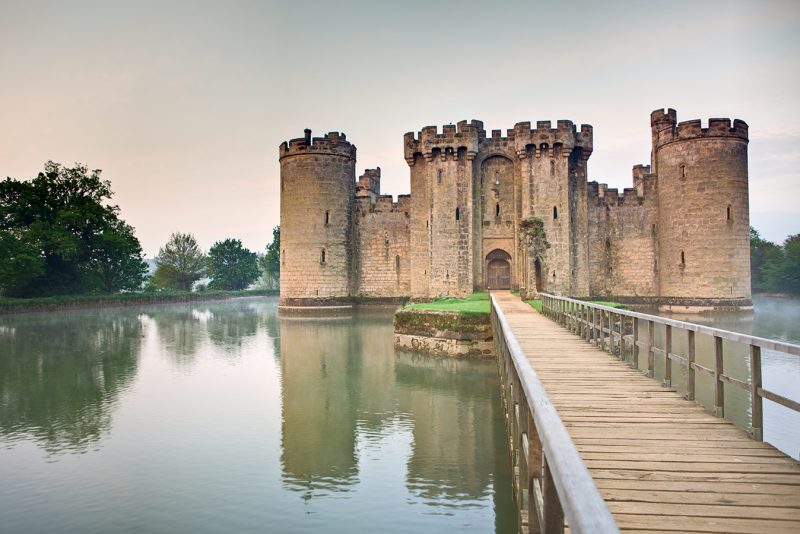The cult classic movie Monty Python and the Holy Grail, featuring the stars of the British comedy group Monty Python, has been loved by people from all over the world since its debut in 1975.
Directed by Python members, Terry Jones and Terry Gilliam, it starred Pythons Michael Palin, John Cleese, the late Graham Chapman, Eric Idle, and Jones and Gilliam. Python regulars, Carol Cleveland and Connie Booth (formerly Mrs. John Cleese), also made appearances in the film. The story is a comedic take on the story of King Arthur, played by Chapman, and his quest for the Holy Grail, and was the first big screen offering by the Pythons. The film was shot mostly in Scotland and England and used some of the historical castles found in Great Britain as backdrops.
1.Doune Castle
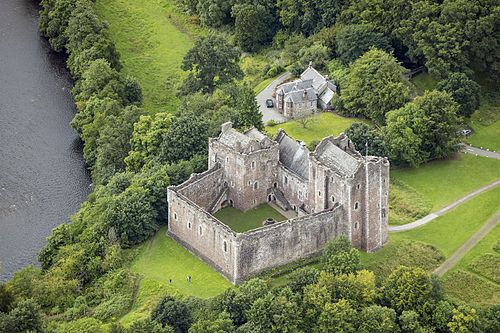
Doune Castle, found in Doune, Perthshire, Scotland, makes several appearances in the movie. Camelot, the Castle of Guy de Lombard featuring the Trojan Rabbit, Swamp Castle, and Castle Anthrax, were all filmed in Doune Castle due to the fact that it was privately owned and easy to get permission for filming.
It is the castle from which John Cleese hurls insults and cows down to Graham Chapman’s Arthur.
The castle was owned by Robert Stewart, the 1st Duke of Albany and Governor of Scotland when, in 1361, he married Margaret Graham, Countess of Menteith. It served as a retreat for the family until the death of Queen Elizabeth I in 1603 and the ascension of her Scots cousin, James I, to the throne of England.
Archaeologists working at the site have determined that the castle was once larger than it is at present, that the south and west wings have now disappeared. A restoration completed in 1883 added the Duke’s Hall with a music gallery and double fireplaces.
The castle is now owned and operated as a tourist site by Historic Environment Scotland. When visiting the castle, one can listen to an audio tour narrated by Python Terry Jones.
2.Arnhall Castle
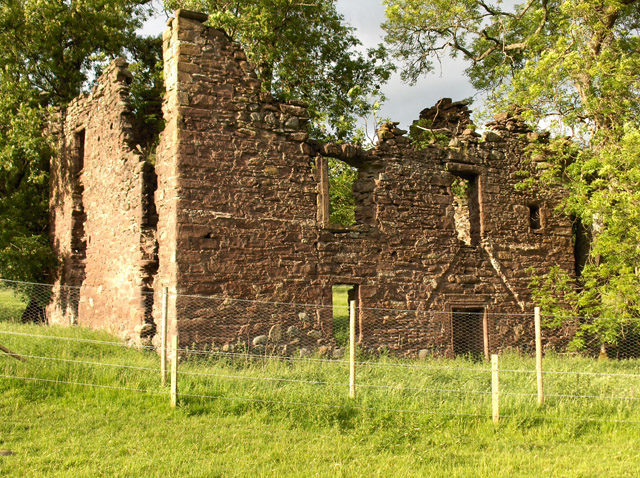
Arnhall Castle, in the county of Stirling, Scotland, was the location used when the modern day historian is decapitated.
3. Bodiam Castle
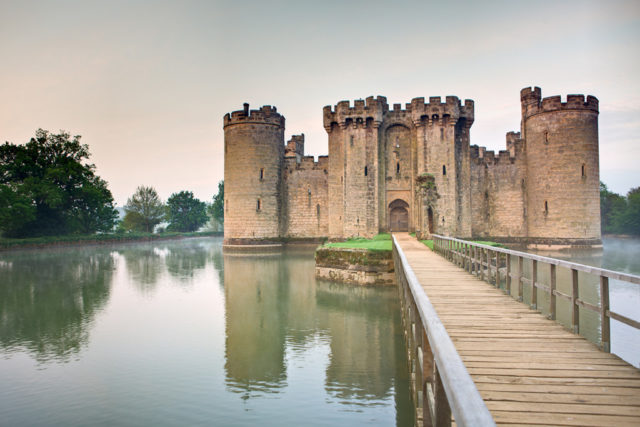
Bodiam Castle, built in the 14th century, doubled as the Swamp King castle and the “Tale of Sir Lancelot”.
The castle, one of the few filming locations in England, is located just outside the small village of Bodiam near Kent. The castle is a favorite destination for tourists because of its classic “perfect castle” appearance and the large moat that surrounds the castle.
It was built in 1385 by Sir Edward Dalyngrigge with the authorization of Richard II. Historians have several theories about why it was built, with some insisting it was built as a fortress to protect the inhabitants from the many invasions plaguing England in the 12th century, while others believe it was built as a showcase residence for Sir Dalyngrigge.
The interior of the castle was destroyed during the English Civil War, but the exterior was undamaged. The castle sat abandoned until 1829 when John “Mad Jack” Fuller, a former member of Parliament, purchased it for £3,000 and did a partial restoration. It was then sold to George Cubitt, 1st Baron Ashcombe, and later to Lord Curzon, both of whom continued restoration work.
The present owners, The National Trust for Places of Historic Interest or Natural Beauty, acquired the castle when it was donated upon the death of Lord Curzon in 1925. It is now a tourist destination and is protected as a Grade I listed building and Scheduled Monument.
4. Castle Stalker
Castle Stalker was built by the Lord of Lorn, Sir John Stewart, around 1388, and passed through different hands of the rival Stewart and Campbell clans throughout the 16th and 17th centuries.
In 1800, the Campbell clan moved into new housing and used the castle as a storehouse, letting the condition decay to the point of the roof falling into the interior.
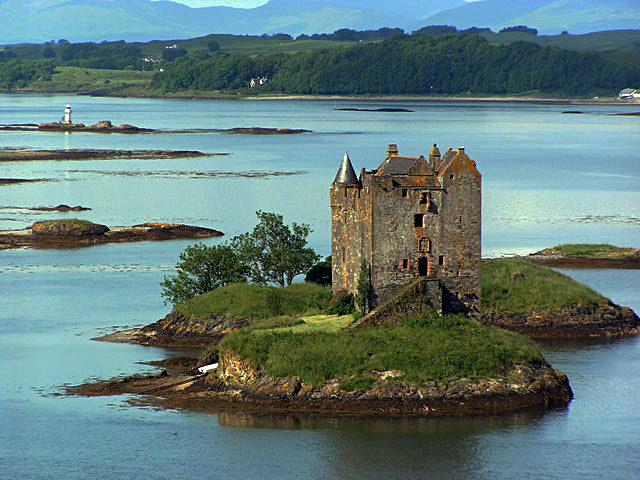
The Stewarts renewed their interest in the castle and in 1908, Charles Stewart of Achara bought Castle Stalker and started preservation work. In 1965, Lt. Col. D. R. Stewart Allward, personally with the help of friends and family, spent ten years rebuilding and restoring the castle to its present condition.
Castle Stalker, located about twenty-five miles from Oban, on Scotland’s west coast, is still owned privately but run tours of the castle on occasion.
It served as ‘The Castle Aargh!’ in the Holy Grail, with the name probably being a play on the name of Argyll, the district of Scotland in which the castle stands.
5. Epping Forest
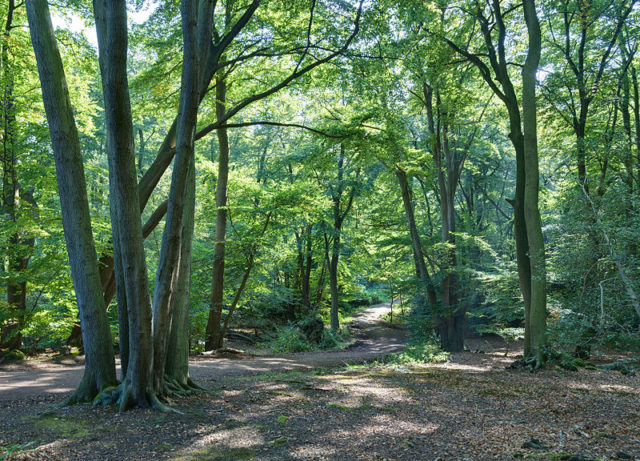
Epping Forest, also located in England, served as the spot for the Black Night’s “only a flesh wound” scene. Covering over six thousand acres, it is just outside of Essex and is owned by the City of London, and is also the home of Queen Elizabeth I’s hunting lodge.
In 1882, Queen Victoria visited Epping Forest and claimed, “It gives me the greatest satisfaction to dedicate this beautiful forest to the use and enjoyment of my people for all time”.
The ancient forest accommodates biking trails, equestrian trails and at one time hosted a race track for motorcycles.
Epping Forest was a popular setting for many books and movies as well as a home for many London notables. Charles Dickens used the forest as a setting in his book, Barnaby Rudge, as did Lord Alfred Tennyson in his In Memoriam A.H.H. Mary Wollstonecraft Shelly, author of Frankenstein, lived in the forest until she was five years old. T. E. Lawrence at one time owned land that is now part of Epping Forest, and playwright Ken Campbell’s funeral was held in Epping.
It is fortunate that these historical landmarks have been preserved on film for generations to come, especially in a movie that has stood the test of time and is as entertaining today as it was back in 1975.
